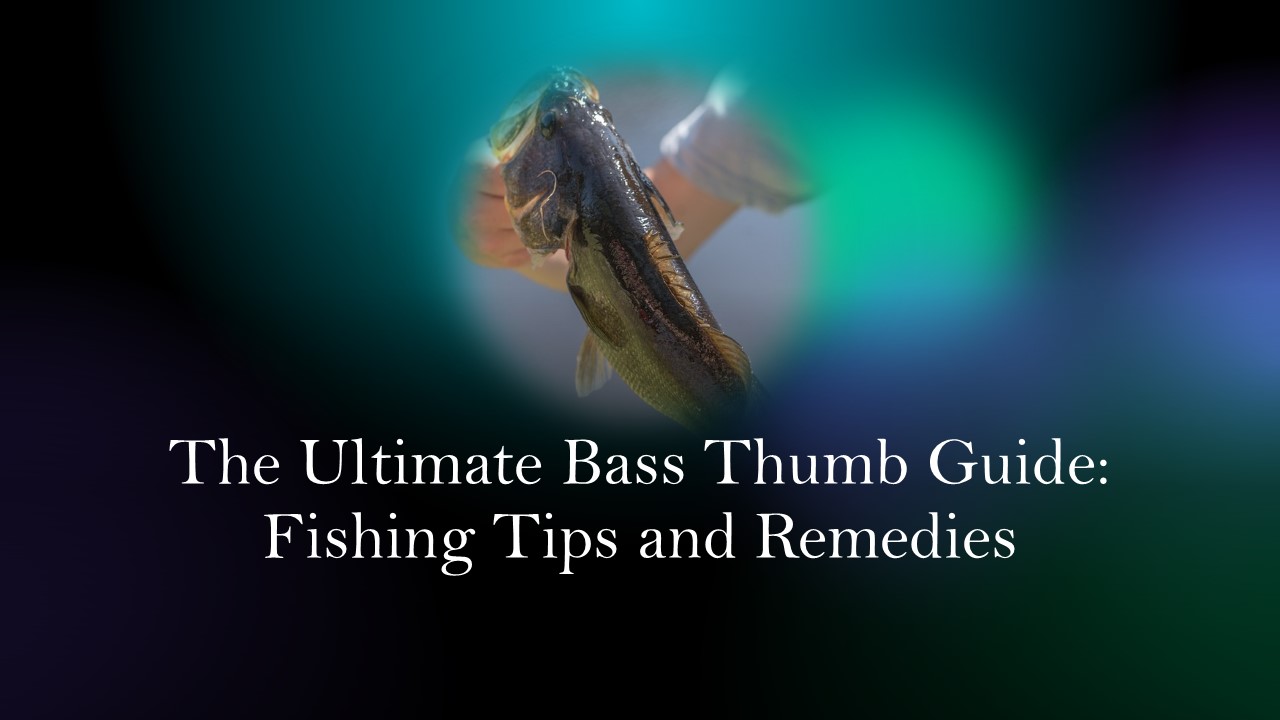Fishing for bass is an exciting and rewarding hobby, but it often comes with a common challenge – bass thumb. If you’re an avid angler, you’ve likely experienced the discomfort of a sore or even cut thumb from handling those feisty bass. In this comprehensive guide, we’ll delve deep into the world of bass thumb, offering you tips, remedies, and expert advice to ensure your fishing adventures are as pain-free as possible.
Understanding Bass Thumb
What Is Bass Thumb?
Bass thumb, often referred to as “angler’s thumb” or “fisherman’s thumb,” is a condition that occurs when the skin on your thumb becomes irritated, sore, or even cut due to repeated contact with the rough surface of a bass’s mouth. This can happen when you handle bass for catch and release, as well as during the process of unhooking and handling your catch.
Why Is It a Common Issue?
Bass have abrasive teeth, and their mouths can be surprisingly rough. When you’re trying to unhook a bass or hold it for a quick photo, it’s easy for your thumb to come into contact with those teeth, resulting in discomfort or injury. Additionally, bass are known for their tenacity and can put up quite a fight, causing further strain on your thumb.
Preventing Bass Thumb
Use Proper Handling Techniques
The first step in preventing bass thumb is to use proper handling techniques. Here are some tips to keep your thumb safe:
- Wet Your Hands: Wetting your hands before handling a bass can reduce friction and the chance of injury. Bass slime also provides a protective layer.
- Lip Grippers: Consider using lip grippers to handle the bass securely without putting your thumb at risk.
- Avoid Sharp Objects: Be mindful of hooks, lures, and any sharp objects when handling a bass. Keep them away from your thumb.
- Use Gloves: Fishing gloves with reinforced thumb areas can provide an extra layer of protection.
Be Gentle During Hook Removal
When removing the hook from a bass’s mouth, be gentle and patient. Rushing the process can increase the chances of injuring your thumb. Use needle-nose pliers or hook removers for a safe and efficient hook removal.
Practice Catch and Release Carefully
If you’re practicing catch and release, remember to handle the bass with care. Minimize the time the fish is out of the water, and always support its body properly. Avoid squeezing the fish tightly, which could lead to a thumb injury.
Treating Bass Thumb
Despite your best efforts, accidents can still happen. If you end up with a sore or cut thumb, here are some remedies and tips to help you recover:
Clean the Wound
- Wash the affected area with mild soap and water to prevent infection.
- Apply an antiseptic ointment to the wound to promote healing.
Use a Bandage
If the cut is deep or continues to bleed, use a bandage to cover the wound. Change the bandage regularly and keep the area clean.
Over-the-Counter Pain Relief
Over-the-counter pain relief creams or gels can help reduce pain and inflammation. Look for products containing ingredients like lidocaine or benzocaine.
Rest Your Thumb
Give your thumb time to heal by avoiding any activities that could further aggravate the injury.
Consult a Doctor
If the wound is severe, shows signs of infection, or doesn’t heal within a reasonable time, consult a healthcare professional.
Preventing Infection
To prevent infection in a bass thumb wound, it’s crucial to keep the area clean and follow these additional steps:
- Avoid exposing the wound to dirty or contaminated water.
- Change bandages regularly and apply antiseptic ointment as recommended.
- If you notice any signs of infection, such as redness, swelling, or discharge, seek medical attention promptly.
Expert Advice
We reached out to Dr. Angela, a renowned sports medicine specialist and an avid angler, for her expert insights on bass thumb prevention and treatment. Here’s what she had to say:
“Prevention is key when it comes to bass thumb. Anglers should always have wet hands and use lip grippers or gloves to protect their thumbs. If an injury occurs, immediate cleaning and proper wound care are crucial to prevent infection. It’s also important to remember that bass thumb is not just a minor inconvenience – untreated wounds can lead to more serious health issues.”
Conclusion
Bass thumb is a common challenge for anglers, but with the right precautions and treatment, you can continue to enjoy fishing without discomfort or injury. Remember to handle bass with care, use proper techniques, and seek medical attention if needed. With these tips and remedies, you can make your fishing experiences more enjoyable and pain-free.
Next, Read: Mastering The Art Of Hook Size Selection For Steelhead










